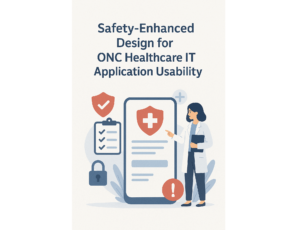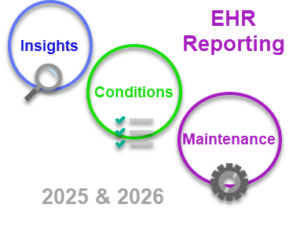Fast Healthcare Interoperability Resources (FHIR)® is a powerful standard for representing and exchanging healthcare data that’s catching on like wildfire in the healthcare IT arena. FHIR was originally conceived to overcome the limitations of HL7v2 and the XML formats historically used for connectivity among healthcare organizations. For many years, healthcare IT leaders have strived for the kind of plug and play environment which some call the “information highway” that industries like banking have thrived on.
Adoption of FHIR is driven by these initiatives:
- Mandatory Compliance:
- FHIR (Fast Healthcare Interoperability Resources) is becoming a non-negotiable standard in healthcare due to regulatory mandates like the ONC 21st Century Cures Act Final Rule and the CMS Interoperability and Patient Access Final Rule which have mandated FHIR API adoption by EHR vendors.
- Regulatory bodies, including the Centers for Medicare & Medicaid Services (CMS) and the Office of the National Coordinator for Health Information Technology (ONC), have emphasized FHIR’s role in achieving interoperability.
- The ONC drives healthcare IT standards for EHR vendors. For 2024, all certified FHIR APIs were required to support USCDIv1, Service Base URL, and revocation of access privileges.
- ONC’s HTI-1 rule requires that for 2025, FHIR APIs will need to add support for USCDIv3 and SMART 2.0
- Enhanced Efficiency:
- FHIR facilitates real-time data exchange and automation across Electronic Health Records (EHRs). It uses the same RESTful architecture that has facilitated entities like Google, Amazon and Facebook to exchange data over the Internet.
- Organizations must incorporate FHIR into their IT strategies to comply with interoperability requirements and enhance data sharing capabilities.
- The API concept reduces issues with provenance of data — who owns the “master copy”, how “fresh” is my data, etc.
- Catalyst for Innovation:
- Initiatives like HL7 Da Vinci and the FAST (FHIR at Scale Taskforce) project are pioneering new capabilities using FHIR. These programs encourage the development of innovative healthcare technologies and solutions.
- FHIR’s flexibility and scalability allow for the creation of modern, patient-centric applications.
FHIR Connectathon
FHIR Connectathons are held regularly under the auspices of the HL7 organization. They are a great forum for collaboration, advancing the FHIR standard, and demonstrating interoperability. As usual, the DHIT team participated in the most recent FHIR Connectathon, which was held virtually. Our focus was UDS+ Quality Measure reporting, which leverages Bulk FHIR capabilities.
UDS+ Quality Measure Reporting
UDS+ is a new initiative from the Health Resources & Services Administration (HRSA) for HRSA-funded health centers to report de-identified patient quality data. HRSA is on the leading edge with FHIR, being the first US federal government entity to require FHIR-based reporting. This poses several challenges which the DHIT team, along with others at the Connectathon, went about solving.
At the Connectathon, we focused on emulating real-world workflows for UDS+ submission and attacked these challenges:
- Data capture, where we were challenged by the representation of UDS+ extensions in the source QDM QRDA format. Once in the FHIR server, keeping UDS+ data separated from USCDI extensions posed additional challenges.
- For the DataStore, we used our DHIT SMART 2.0 Dynamic FHIR Server, which will be certified for HTI-1 2025 this month.
- Configuration of servers, components, and human interaction processes.
- Upgrading FHIR components to allow SMART 2.0 usage.
- Adding Reporting Parameters Resource to our Dynamic FHIR API as part of the USCDI requirement.
Our expertise in Quality Data Reporting aided in build-out, implementation, and compliance with quality reporting standards.
Prior Authorization Using FHIR

CMS would like to wean our healthcare system from the current burdensome, time-consuming phone and fax-based prior authorization process. This would require vendors and providers to adopt FHIR data exchange standards created by the Da Vinci Project and driven by the CMS Interoperability and Prior Authorization Final Rule (CMS-0057-F) published in January, 2024.
This most recent prior authorization rule mandates that payers must support prior authorization via FHIR, aiming to reduce administrative overhead and improve data exchange efficiency. For healthcare app developers and clinical IT leaders, this means supporting the FHIR data exchange standard and the Da Vinci Burden Reduction standards that rely on it, is essential to comply with new regulations and streamline the authorization process.
The rule focuses on streamlining the prior authorization process for healthcare providers and aims to improve access to necessary care for patients. Some key points include:
- Faster Decisions: Insurers will need to provide decisions on prior authorization requests within specific time frames. Standard requests will need a decision in 7 days, while urgent requests will have a 72-hour turnaround
- Clear Denial Reasons: When denying a request, insurers must give a clear explanation. This will help providers address any issues and potentially resubmit the request.
- Improved Technology: The rule requires insurers to implement technology to allow for electronic submission of requests and receiving decisions.
The CMS Interoperability and Prior Authorization Final Rule contains several key compliance dates that impact EHR vendors and their clients:
- January 1, 2026: Payors must implement certain operational provisions, including:
- Sending prior authorization decisions within 72 hours for expedited requests and seven calendar days for standard requests.
- Providing specific reasons for denied prior authorization decisions.
- Publicly reporting prior authorization metrics on an annual basis.
- January 1, 2027: Payors must meet the application programming interface (API) development and enhancement requirements. This includes implementing APIs that use FHIR such as the Prior Authorization API, Patient Access API, Provider Access API, and Payer-to-Payer API.
The Final Rule applies to any payor who provides Medicare Part B, Medicare Advantage, Medicaid, and CHIP managed care plans.
The Da Vinci Project is a private sector initiative involving more than 50 industry-leading providers, payers, and technology vendors focused on seamless data exchange between healthcare providers and payers using the FHIR standard. DHIT plans to lead the way for our EHR clients in implementing FHIR-based Prior Authorization to connect to payers.
Contact DHIT if you are interested in implementing UDS+ or collaborating with us on FHIR-based Prior Authorization. We are eager to start a dialogue and provide solutions to these essential workflows.




